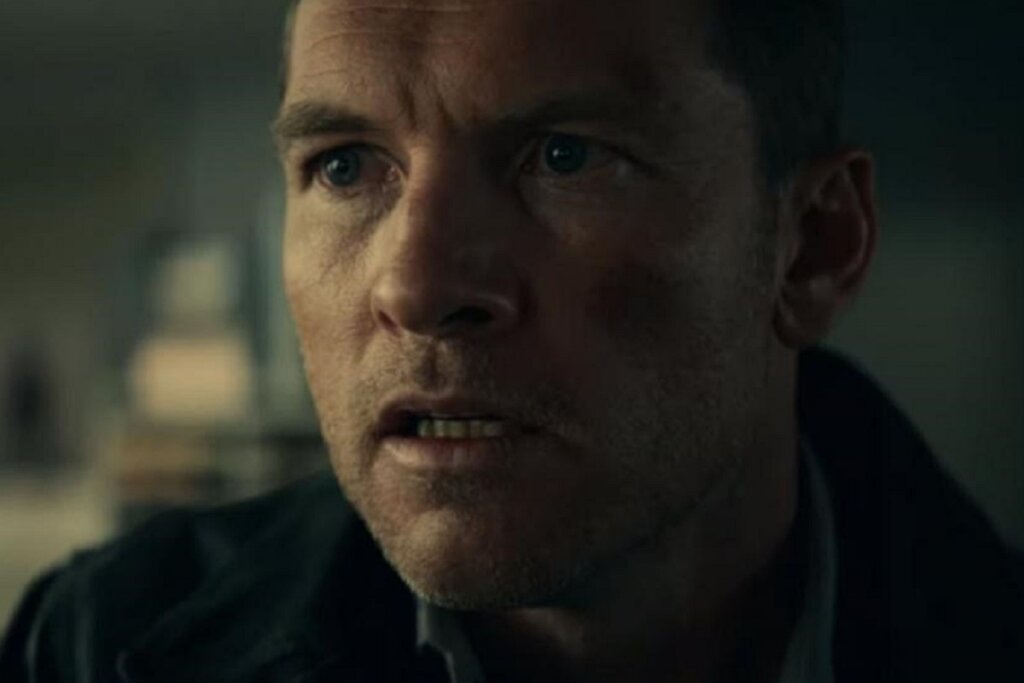Fractured, When Reality Doesn't Correspond to the Truth

Our minds have the potential to directly influence our lives, to the extent that our everyday actions or even conscious acts are affected. To explain the force our minds are capable of exerting, we can take the movie Fractured as a reference. It involves the kinds of circumstances when reality doesn’t correspond to the truth.
This Netflix production has provoked a great deal of controversy. Indeed, it’s received both positive and negative criticism. However, what’s undeniable is that it’s a production that directly involves us, the viewer, making us think deeply about everything that’s happening on screen.
We’re going to take a close look at the story from a psychological point of view.
Fractured, a thriller with suspense, action, and tension
The story takes place in the United States. A family is traveling to celebrate Thanksgiving with their family. They stop at a gas station. At a certain point, the protagonist, Ray Monroe, played by Sam Worthington, stops paying attention to his daughter. She falls into a pit on a deserted construction site and breaks her arm.
Joanne Monroe (the mother), played by Lily Rabe, sees the accident, and, together, they help their daughter. They then take her to the hospital, a place where both mother and daughter disappear. In fact, the hospital claims to have no record of them.
The movie is classified within the psychological thriller genre. Broadly speaking, it tries to generate in the viewer a state of continuous tension. In effect, transferring the same concern to us that the main character is experiencing when he doesn’t know what’s happening.
“The mind of man is capable of anything.”
-Joseph Conrad-
When reality doesn’t correspond to the truth
The protagonist tries to find clues to show that his wife and daughter were admitted to the hospital emergency room. As viewers, we go along in the process with him.
- The hospital videotape clearly shows how mother and daughter enter the hospital and carry out the necessary procedures for the child’s admission. The father begins to look for them. In this way, we’re encouraged to put ourselves in the shoes of the protagonist and try to interpret the events.
- The scenes are realistic. We know that something strange is happening. Furthermore, we think the father may well be right. This is despite the fact that he’s accused of being unbalanced and that he feels there’s a conspiracy against him.
- Throughout the film, we see how the father loses control at certain points. However, he eventually manages to find his wife and daughter on an inaccessible ground floor. It’s here where the story is resolved. As a matter of fact, in reality, he hasn’t really found them. It’s an invention of his own that his mind has created.
Fractured challenges us to decide what part of what we’ve seen is true and what’s just a figment of the father’s imagination. In other words, we have to decide if everything is a conspiracy against the protagonist or if it’s all in his mind. Both sides are in doubt, which is precisely the emotion the director wants us to feel.

The outcome of Fractured
We recommend that if you haven’t yet seen the movie, you do so and then return to the article at this point.
Finally, we find out that everything was the fruit of the protagonist’s imagination. In fact, he’d murdered his wife and daughter but preferred to create an alternative reality that wasn’t true. He even convinced himself that the events had really taken place and, as the viewer, we were also directly involved in them. Finally, he suffers a psychotic outbreak and causes a homicide. This is something that he doesn’t want to recognize and it causes him to hallucinate.
According to the psychologist, Cristina Blanco, a psychotic disorder can produce cognitive impairment and delusions and can create a parallel reality. Along the same lines, Dr. Pedro Sánchez Escobedo, from the Autonomous University of Yucatán, certifies the kind of realism that a psychotic reaction can present in a person’s mind, thus distorting it.
This is reflected in the film. It’s a great psychological thriller, both for the story itself and the interpretation of the characters. In addition, it’s meticulously filmed and is perfectly in tune with the emotions we feel as the spectators of the events.
All cited sources were thoroughly reviewed by our team to ensure their quality, reliability, currency, and validity. The bibliography of this article was considered reliable and of academic or scientific accuracy.
- Cortés Ruiz, María José y Gutiérrez-Zotes, Alfonso y Valero Oyarzábal, Joaquín y Jariod Pàmies, Manel y Labad Alquézar, Antonio (2010). Delirios y su relación con el temperamento y carácter en pacientes con trastorno psicótico. Psicothema, 22 (1), 84-91. [Fecha de Consulta 20 de Agosto de 2021]. ISSN: 0214-9915. Disponible en: https://www.redalyc.org/articulo.oa?id=72712699014
- García García, A. (2011). Psicología y cine: vidas cruzadas. UNED. Madrid.
- Sánchez Escobedo, P. (2008). Psicología clínica. Manual Moderno. México.
This text is provided for informational purposes only and does not replace consultation with a professional. If in doubt, consult your specialist.








